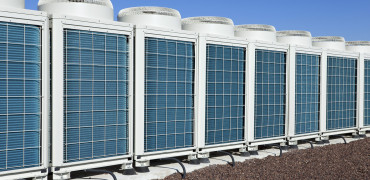The last 12 months have changed a lot for everyone across the world, and undoubtedly one area that has seen the most change is our working lives.
We’ve gone from working in offices to working from kitchen tables surrounded by family chaos.
In fact, data from the Office of National Statistics (ONS) found that 57.2% of workers living in London worked from home during the pandemic.
According to the ONS, about a quarter of people (25.9%) had worked at home at some point in the week before they responded to officials conducting its annual population survey.
It said that this compared with 12.4% of workers in 2019.
With people slowly returning to work and considering that Covid-19 remains a severe risk, doing everything possible to protect the health of people in the offices has become a priority. So what can we do to make offices safer?
Good ventilation is arguably the most important thing to think about when re-opening a building
Conduct a workplace health & safety inspection
Your first task is to ensure that everything is still safe in your building.
Even if you had a Health & Safety inspection before lockdown, it makes sense to do one again. You never know what can happen in a building when they're left unused.
Conduct your usual safety inspections, assessing whether or not anything poses any risks to your occupants.
If your building has been unoccupied for months, you should identify at least one safety issue: dust.
While it may seem innocuous, dust can plague your occupant's health & safety in a couple of ways.
Firstly, it can trigger airborne allergies or asthma attacks, making it harder for people to breathe.
Secondly, when layers of dust fall on machines or equipment, it can potentially cause faults. Or, the items may not work to their full capacity, possibly causing safety issues in the future.
Carry out deep cleaning of your building
Regular deep cleaning of your building is essential to keep your occupants safe and healthy, by stopping the spread of germs in your facility you make the building a much safer place to work.
Regular deep cleansing of shared spaces has never been more important as it is now with Covid-19 germs still posing a threat.
A good solution for building managers could be arranging for a cleaning company to clean the building as deeply as possible in the lead-up to the re-opening, ensuring that the workplace is free from dust, dirt and other bacteria that may have gathered whilst the offices have been closed.
Improve the air ventilation
Good ventilation is arguably the most important thing to think about when re-opening a building.
Poor indoor air quality is something that affects every aspect of our health, from conditions like eczema and asthma to our performance and cognitive function.
Good ventilation throughout buildings has become even more important during the pandemic as it's well-known that the virus is largely passed through airborne droplets.
Therefore, ventilating your facility and keeping a good supply of fresh air is vital to the health of people in the workplace.
If you're looking to replace the ventilation system in your building, I’d recommend taking a look at the new commercial Lossnay system, which simultaneously extracts stale air from commercial buildings and supplies fresh filtered air, whilst recovering valuable heat energy for maximum efficiency.
In a recent podcast, we discussed the importance of clean air with Nathan Wood, managing director of Farmwood M&E, Chairman of BESA, and Chairman of the IEQ Clean Air Taskforce at GCP Europe.
In this episode, Nathan and I look again at Indoor Air Quality and delve into ways to improve it.
We also speak about the benefits good air quality can have on our health and the market opportunities this brings to buildings in the UK.
Retrofitting for a better workplace
Another area that can be looked at is the air conditioning system.
To neutralize six key indoor air pollutants and inhibit 99.8% of SARS-CoV-2 (*) we would suggest you look at devices such as the new Plasma Quad Connect, which is a bolt-on device that purifies the air and is also highly effective against dust, viruses, mould and allergens such as pollens.
(*) Derived from and subject to test results, for and on behalf of Mitsubishi Electric, conducted at the Microbial Testing Laboratory, Japan Textile Quality and Technology Centre, Kobe, Japan.
The Plasma Quad technology is added to internal air conditioning units and works like an electrical air curtain to catch and neutralise even microscopic particles in the air – significantly improving indoor air quality.
The device has been designed with easy fitting to both new and existing installations in mind. Its bolt-on capability means that Plasma Quad Connect can be fitted to existing equipment, including wall-mounted units, ducted units and ceiling cassette systems.
With more businesses now focusing on improving indoor air quality and providing reassurance and confidence for staff and customers coming back into buildings, the Plasma Quad Connect offers a simple and effective solution that will provide years of robust operation, and cleaner, healthier indoor air for all.
Going back to an (almost) everyday life is something that everybody has waited for throughout the pandemic, but, as discussed, it’s not always so easy to stay safe.
Getting the best air quality possible is more important than ever - and, luckily, we can help you.
James Smurthwaite is Business Development Manager




